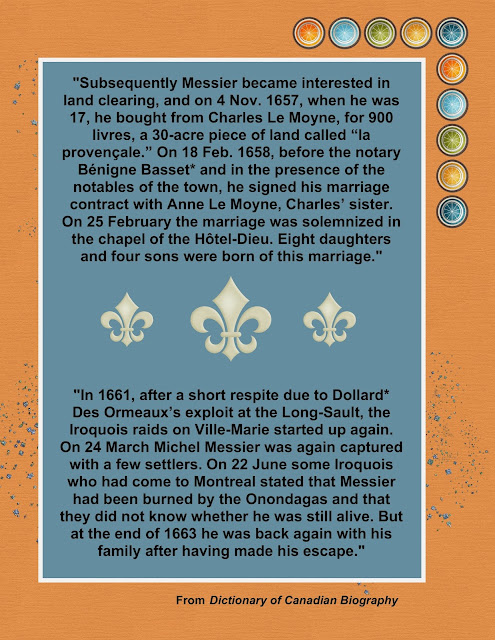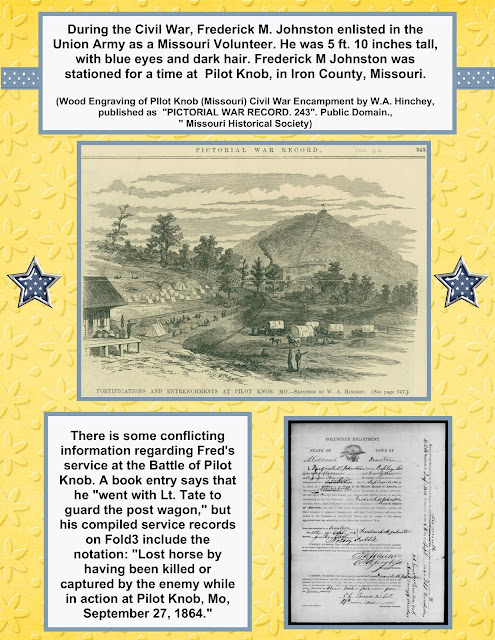"The future is not something we enter. The future is something we create."—Leonard I. Sweet
This week's blog topic is Future. I think about the future a lot, but especially at this time of the year.
It's not what you think. I don't get all sentimental at the holidays or anything like that. I just hate winter. I hate the cold. I hate being cooped up inside. I hate wearing shoes and socks all the time.
You see, this is the time I think about the summer. I go through seed catalogs and plan my garden. I look at calendars of spring and summer festivals in the area to visit with my grandchildren. I plan my summer vacation.
More and more, my summer plans have included visits to places where my ancestors lived. I want to know how and why, if possible, they left their homes in other places and how I came to live in Missouri. What influenced their decisions? Were they looking for better opportunities? Were they running from some type of misfortune? Were they adventurers?
The first real research trip I made was to Tennessee. I visited the Tennessee State Library and Archives in Nashville and dug up a few things. Then I drove around the state to a few courthouses, churches, and cemeteries. It was all pretty uneventful until I went to Obion County, Tennessee to a small town called Hornbeak. After meeting a man who lived next to the church and knew of my ancestor, I was hooked!
Since that time I have taken a few trips, but the one the summer of 2020 will be the best yet.
I know it will require a lot of planning and a lot of research, but it's the trip of a lifetime. I want to do it right.
I'm going create my future, my 2020, to make it as genealogically fruitful and as emotionally rewarding as possible.
My daughter Jen and I are going first to Paris. I've never been, but some of my ancestors were there. One, Nicolas Hébert, was an apothecary and may have been associated with Catherine de' Medici, Queen of France. She supposedly had cabinets of poisons. Did she get them from him? She was also known to have met with Nostradamus. Did my ancestor know him too? I need to know more!
There are other ancestors who lived in the Paris vicinity. I want to learn and see as much as I can, and advance research is so important.
Fortunately for us, my daughter speaks and reads French. While she's busy diving into French history, I'll be working on another family line. We are going to leave Paris after a few days and take a ferry from Calais to Dover and see the White Cliffs of Dover as they are meant to be seen - from the water.
Then we are going to travel across southern England, seeing the sights until we arrive in Devon, England. Our Dunsford, Ware, and associated ancestors lived in many of the small towns in the middle of Devon. They were commoners - gardeners, paper makers, rope makers. I want to learn more about their lives and visit the places they frequented. I am just as excited about these families. We're going to get to stay in some country manor houses, even one with a thatched roof (Thanks, AirBnb!). We will look out over the moors at the beauty of England, and, of course, go to Cornwall - Sidenote: If you haven't watched Poldark, you need to watch it. Cornwall is amazingly beautiful.
I hope all of you are planning a 2020 as great as I hope mine will be.
Happy New Year!
Here's to the future!
The first real research trip I made was to Tennessee. I visited the Tennessee State Library and Archives in Nashville and dug up a few things. Then I drove around the state to a few courthouses, churches, and cemeteries. It was all pretty uneventful until I went to Obion County, Tennessee to a small town called Hornbeak. After meeting a man who lived next to the church and knew of my ancestor, I was hooked!
Since that time I have taken a few trips, but the one the summer of 2020 will be the best yet.
I know it will require a lot of planning and a lot of research, but it's the trip of a lifetime. I want to do it right.
I'm going create my future, my 2020, to make it as genealogically fruitful and as emotionally rewarding as possible.
My daughter Jen and I are going first to Paris. I've never been, but some of my ancestors were there. One, Nicolas Hébert, was an apothecary and may have been associated with Catherine de' Medici, Queen of France. She supposedly had cabinets of poisons. Did she get them from him? She was also known to have met with Nostradamus. Did my ancestor know him too? I need to know more!
There are other ancestors who lived in the Paris vicinity. I want to learn and see as much as I can, and advance research is so important.
Fortunately for us, my daughter speaks and reads French. While she's busy diving into French history, I'll be working on another family line. We are going to leave Paris after a few days and take a ferry from Calais to Dover and see the White Cliffs of Dover as they are meant to be seen - from the water.
Then we are going to travel across southern England, seeing the sights until we arrive in Devon, England. Our Dunsford, Ware, and associated ancestors lived in many of the small towns in the middle of Devon. They were commoners - gardeners, paper makers, rope makers. I want to learn more about their lives and visit the places they frequented. I am just as excited about these families. We're going to get to stay in some country manor houses, even one with a thatched roof (Thanks, AirBnb!). We will look out over the moors at the beauty of England, and, of course, go to Cornwall - Sidenote: If you haven't watched Poldark, you need to watch it. Cornwall is amazingly beautiful.
I hope all of you are planning a 2020 as great as I hope mine will be.
Happy New Year!
Here's to the future!
P.S. You should all check out the great prices on Norwegian Airlines, which made this trip possible.
















































